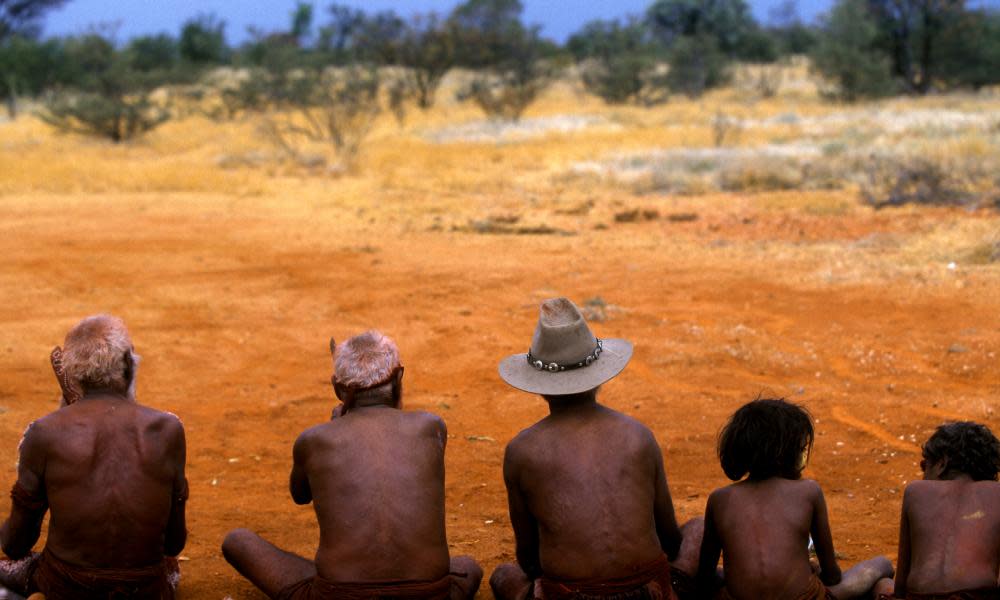NT intervention a 'debacle' and second attempt should be made, commission told

A 10-year Northern Territory intervention “mark two” could address the failings of the first one, which has seen most of the money “squandered”, the Northern Territory royal commission has heard.
Olga Havnen, the chief executive of the Danila Dilba Aboriginal health service, said the intervention was a “debacle” and a new attempt with Indigenous involvement “couldn’t do any worse”.
Havnen, who is also a former coordinator general for remote services in the NT, made the comments before the royal commission into the protection and detention of children on Thursday.
The hearing has coincided with the 10-year anniversary of the federal government’s emergency intervention into the region, which has been criticised as draconian and removing self-determination from Indigenous communities while failing to address Indigenous inequality.
Havnen told the hearing the NT was still reliant on federal funds and still failing to involve Indigenous people and organisations properly. She suggested a “mark two of what was attempted under the intervention”: a 10-year “Marshall plan” between federal and territory governments but with Aboriginal people as expert advisers on a planning, oversight and implementation committee.
“It’s not enough to pay us the cursory privilege of being consulted, where our voices are not listened to and where we have no role in decision-making,” she said. “We couldn’t do any worse than what’s being done today, surely.”
This week the commission heard the rates of child protection cases and notifications has more than doubled in the 10 years since the intervention. Separately, NT budget estimates revealed the number of children in out of home care had tripled, while the proportion in Aboriginal kinship care had dropped 20%.
Havnen said many government contracts were still procured without proper assessment of whether the organisation had the capability to work with Indigenous communities.
“These arrangements are absolutely stunning and I think are largely a legacy of the intervention supposedly committed to improving Aboriginal communities,” she said.
“By any measure the vast majority of that money has been squandered, and the people who made those decisions need to be held to account in my view.
“Just on the very cursory amount of information we have access to, you have to go: what the hell is actually really going on here and why does this continue to happen?”
Earlier this week the commission heard evidence a private business, Safe Pathways, had charged the Northern Territory government $85,000 a month to run a residential home for a maximum of four children.
A former Safe Pathways manager, Tracey Hancock, told the commission the amount would include staff wages but she didn’t have any further information on what the money was for.
Safe Pathways reportedly told the ABC the charges had been approved and accepted by the NT government.
“We get held up to be accountable as Aboriginal service providers and our level of accountability and transparency – every dollar we spend and commit, including performance outcomes, is well and truly documented,” Havnen said on Thursday.
“But you go and look at these websites for a lot of these NGOs running out-of-home services, there’s no detail about their governance arrangement, there’s no annual report, there’s no financial transparency or accountability. How is this good for anybody?”
Havnen earlier told the commission governments treated large non-Indigenous organisations as equal partners more than they did Indigenous organisations. She also said there were Indigenous organisations across the NT that were “well placed” to provide services currently contracted to non-Indigenous NGOs.
Aboriginal health services across the NT would be asked by the department to provide client medical records when there was an investigation “and yet we seem to be completely invisible to them as a capable partner and potential resource” to assist the department and vulnerable families, she said.
She said it seemed ironic and suggested the commission look at where remote Aboriginal health services were located. “Many of them are in those communities where we know large numbers of Aboriginal children are being removed from.”
The commission continues.

 Yahoo News
Yahoo News 
